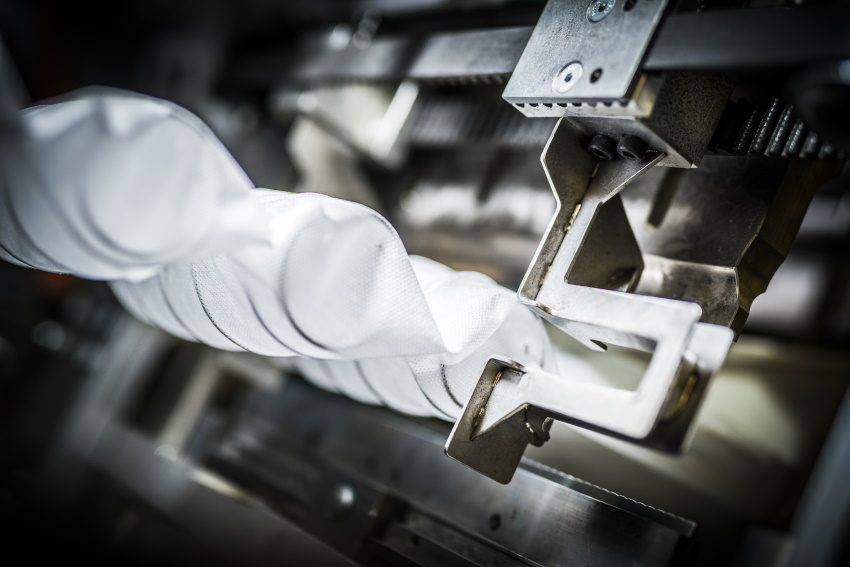The DOCUFY CAx Quality Manager has been in use at GRIMME Landmaschinenfabrik for one and a half years – a success story.
“Harvesting success” is the Grimme Group’s slogan. Success is the result of high quality. At GRIMME Landmaschinenfabrik GmbH & Co. KG in Germany, you can see straight away that what matters is the quality of the end product: agricultural machinery for potato, beet and vegetable cultivation that the family business has designed and built for almost 90 years. Their portfolio now comprises over 150 types of machinery that sell between 5 and 300 units per series and year. The most complex ones contain up to 300,000 components.

“We needed a tool like DOCUFY’s DQM to achieve better data quality and reduce lead times during the design process.”
Markus Frommeyer, PLM Consulting department at GRIMME Landmaschinenfabrik in Damme.
Such large data volumes mean that high-quality CAx data are important right from the design stage, because deficient CAx data don’t just drive up development times and costs. They also cause unnecessary expenditure of time and money over the entire product development process as well as in purchasing, production planning and manufacture, assembly, servicing, etc. Conversely, detecting and rectifying deficiencies in data quality early on saves resources and accelerates time to market, allowing you to boost profits and harvest success. High-quality CAx data also offer maximum process security and provide a solid basis for modifying and enhancing products. Those are powerful arguments, ones that were also able to convince GRIMME Landmaschinenfabrik to introduce DOCUFY CAx Quality Manager (DQM) software in May 2019 to improve the quality of CAx data as soon as they are generated during design. Around 120 employees in the company’s development department now use DQM.
90-day trial got things moving quickly
GRIMME started off with a no-obligation 90-day DQM test licence. This fully functional licence can be ordered together with a complete service package comprising installation, configuration and support, which is available for a fixed price of EUR 2,950.00, including all travel and incidental costs. GRIMME opted for this package to explore the potential uses and test how the program works with live assemblies. Markus Frommeyer from the PLM Consulting department at GRIMME Landmaschinenfabrik in Damme, says:
“Before we introduced DQM, our model quality testing – where it was even possible – was done manually in a laborious process.” Some errors only emerged when we used the data. Agreed specifications and rules could not be introduced or requested efficiently. This led to many workflows being rejected due to a lack of 3D model data and to long lead times. Standardising our work methods in design allows us to better meet the increasing quality expected of 3D models for subsequent processes. We needed a tool like DOCUFY’s DQM to achieve better data quality and reduce lead times during the design process.”

Less errors – better harvest
With one click, DQM checks drawings, components and assemblies of any level of complexity in Siemens NX. It lists all irregularities and proposes solutions. Users can double-click on affected elements to zoom in on them. System-guided error correction and the customisable online help feature enable users to easily apply and become familiar with defined CAx methods and standards. A detailed graphical reporting system for individual items or (large or small) assemblies ensures that managers always know how advanced the design work is.

Existing test routines from the test centre were used
Like many other users, GRIMME was able to convert its temporary evaluation licence into a permanent DQM licence quickly and without any fuss, allowing its employees to continue working seamlessly. Although GRIMME had no previous experience of similar test tools, its designers were quickly able to start using the software effectively. Frommeyer adds: “The configuration editor is really easy to use. All the test routines are listed and they let you classify them to determine whether rule violations lead to errors (preventing approval) or merely to warnings. The test profiles can be used at all the company’s locations and there are no language barriers because German and English are available in the standard version.
Initial scepticism gave way to enthusiasm
“When we told our design staff that we would be installing new software to enhance CAx data quality, some of them thought we wanted put checks on their work, exposing their mistakes as it were. Due to that initial hesitancy, we first set the test parameters so that erroneous data merely triggered a warning in the team centre in the form of an amber-marked alert that something was wrong. Our designers now appreciate DQM because it helps them do better work from the start. The users even said they would prefer a red “error” message instead of just an amber warning. They want stricter settings for the results of the check so that they can correct their work straight away and then deliver it with green instead of amber status. Some staff are even coming up with ideas for other checks.”
Time to reap the benefits: faster design and fewer errors
After one-and-a-half years of using DQM, Frommeyer’s view is positive in all respects: “Our data quality and the design of the models in CAD have improved enormously. Components and assemblies have a more uniform structure and errors in relationships or links are detected and eliminated early on. It’s also important to us that criteria from the design guidelines are checked such as layer allocation, wave geometries, designations, dimensions, tolerances, standards, model design, etc. DQM does a great deal of the checks for us here – and it’s so easy to use.”






